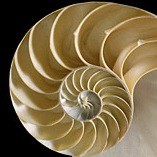The Muqatta’at or “Quranic Initials” – which can be abbreviated as “QIs” – are 14 unique Arabic letters arranged in various groupings which do not form words, hence the Arabic name meaning “cut off” or separated. They form 14 unique “sets” of letters containing from 1 to 5 letters each. Counting repeats, they comprise 30 sets in 30 ayat in 29 suras – sura 42 (Al-Shura) contains two sets of QIs, each in a separate aya (42:1-2). With this one exception, these initials occur in the first aya/verse of a sura, some comprising the entire aya, and others followed by words in the same aya. Many scholars throughout history have studied these, with varying results and ideas, some concluding that we cannot know their meaning, dubbing them “mystic/mysterious” letters. You may have heard of them as part of a “code,” claimed to be protecting the Quran from adulteration (most famously Code 19). But would the Almighty even need such a code? These letters are at least presented to make us think. So we’ve thought about them and their meaning in the Quran, bearing in mind that this is a book by the Almighty Omniscient, and nothing He does is “meaningless.” Clue: Allah’s words are decrees but these are letters that don’t form words – thus an opening where fate is not sealed.
Continue readingResurrection and Hereafter
Wives, Angels’ Wings, and the {2,3,4} Set in the Quran
StandardScholars have over time pondered two ayat – 4:3 and 35:1 which concern the elements named in the title above – connected somehow by the curious fact that each mentions the phrase “two and three and four.” Why are these specific numbers mentioned this unusual way? In light of what was previously discussed as a {3,4} set, which indicated the Quran’s architecture may be based on Allah’s name in Arabic, I’ve found that this Quranic {3,4} set is also part of a {2,3,4} set, matching the numbers given in these two ayat. By “set” I mean a group of objects (or “elements,” in this case from the Quran) as per set theory. Now, I’m no mathematician, but for me it’s a way of seeing these numbers as part of a fascinating structure in the Quran, found in Allah’s name in Arabic, the Basmalah, and how the last three surahs in the Quran connect to the first as we shall explain – and more. So first, we examine the two ayat, the meaning of “2 and 3 and 4” in each context, and how it relates to the Quran’s structure.
Continue readingWhat Does the Quran Say about Jesus’ “Second Coming?” And about Masih Al-Dajjal, the Antichrist?
StandardFirst, the Quran says nothing about a “second coming” or “return” of Jesus/Isa, nor does it mention an Anti-Christ/Masih Dajjal or anything similar. This itself is a serious omission for such a significant and unprecedented event. But there is an aya in the Quran (43:61) that is often construed to possibly “fit” the idea that Jesus might somehow be “coming back.” And there are many hadiths which mention this idea. Hence for many Muslims, it’s a done deal. But how reliable are those hadiths and do they contradict the Quran? For one thing, the Quran, unequivocally states that prophet Mohammad is the “seal” of the prophets (33:40). The word khatam or “seal” is significantly different than to say “the last” or akhir prophet. A “seal” as used in the Quran means an irreversible decree from Allah Himself, the same word used repeatedly to say Allah “sealed the hearts” of rejectors/disbelievers (4:155, 9:87, 9:93, 16:108, 47:16, 63:3). Once Allah “seals” a person’s heart, there’s no turning back. For Jesus/Isa to come after Mohammad would “break the seal” and it doesn’t change this fact that Isa was not a new prophet. In fact, it goes against the Way of Allah with his prophets, discussed below, as well as breaches the impassable barrier between this world and alghaib – the unseen, which in this case refers to Allah’s timeless realm – and this is simply never allowed. There’s no room for equivocation!
Continue readingThe Seen vs the Unseen Al-Ghaib, Angels, & the Finality: Separate Realities
StandardIn modern society many people think all knowledge is in some way scientific and empirical. But what we miss is an understanding of the purpose and meaning of life, basic morals and common decency, and of course, matters of faith, including what happens after death, the question of Judgment Day, and related symbols or “signs.” The Quran speaks of two worlds, the “witnessed” and the unseen or الغيب alghaib which is beyond our perception. And the “witnessed” simply means that which we have observed. Nothing under the category of alghaib “the unseen” is more significant than Al-Akhira, The Finality, or Resurrection/ Judgment Day. Its reality is described in the Quran as Truth itself, when everything we could not know in empirically evident detail (due to its nature) in this world will become absolutely evident. From this we can begin to understand that we are expected to trust in Allah b’al-ghaib meaning without directly perceiving and there are powerful reasons for this.
Continue readingDeath and Resurrection in Every Heartbeat
StandardA previous post speaks in details about how with every heartbeat there is a death — when dead (de-oxygenated) blood enters the right atrium (yin receptive chamber) to be pumped at low pressure (an essential yinmercy) into the lungs (by the right balanced yin/yang ventricle/pump) — and resurrection — oxygenation in the lungs, the organ that recycles the element of air (O2 in, CO2 out) — received by the left atrium (receiving chamber), to be pumped by the powerful left ventricle (the power yang pump) at high pressure (full might/power) alive into the whole body, which is thus resurrected. And how this relates to Allah’s name.
THIS HAPPENS WITH EVERY HEARTBEAT. And this heartbeat is dhikr Allah!





